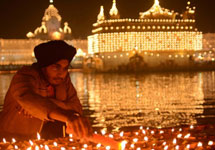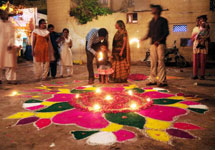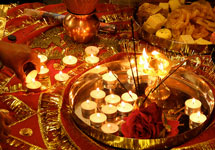Diwali




Among the Sikhs, Diwali came to have special significance from the day the town of Amritsar was illuminated on the return to it of Guru Hargobind (1595-1644) who had been held captive in the Fort at Gwalior under the orders of the Mughal emperor, Jahangir (1570-1627) . Hence forth Diwali, like Baisakhi, became a day of pilgrimage to the seat of the Gurus. Bhai Gurdas (1636) in his Varan, has drawn an image of lamps lighted on the night of Diwali like the stars, big and small, twinkling in the firmament going out one by one bringing home to the gurmukh, one who has his face turned towards the Guru, i.e. he who is attached to the Guru, how transitory the world is. During the turbulent eighteenth century, it was customary for the roaming warrior bands of Sikhs to converge upon Amritsar braving all hazards to celebrate Diwali. It was for his endeavor to hold such a congregation at Amritsar that Bhai Mani Singh, a most widely revered Sikh of his time, was put to death under the imperial fiat. Amritsar still attracts vast numbers of Sikhs for the festival and although all gurdwaras and Sikh homes are generally illuminated on Diwali night, the best and the most expensive display of lights and fireworks takes place at the Sri Harmandir Sahib (Golden Temple), Amritsar
About Punjab
Travel Guide
Main Links
Travel Information
Exploring Punjab - Vacations
Punjab's Forestry and Wildlife
The Unique eco-system of the Shivaliks is spread over a geographical area 9448.97 Sq. km, and lies in the north-eatern part of the state extending from north-west to south-east along the Himachal Pradesh Border. It is spread across the eastern part of the districts of Gurdaspur, Hoshiarpur, Shaheed Bhagat Singh Nagar and Rupnagar


